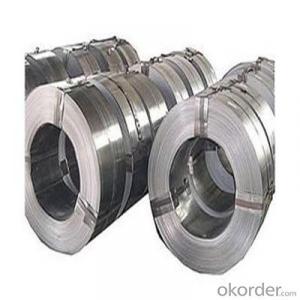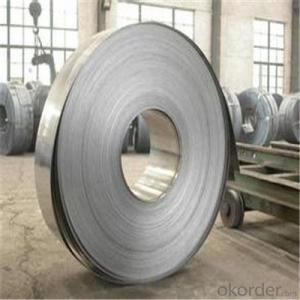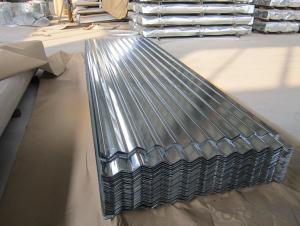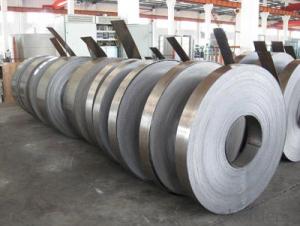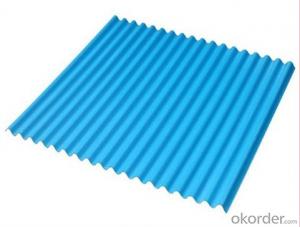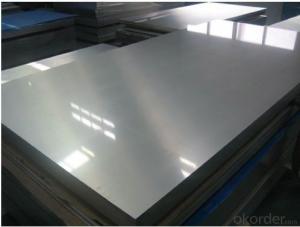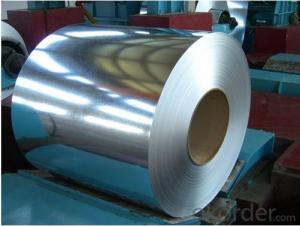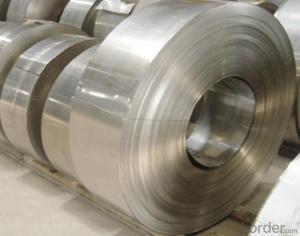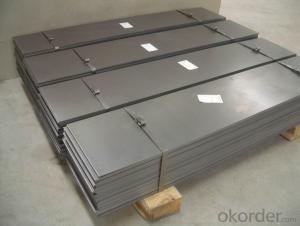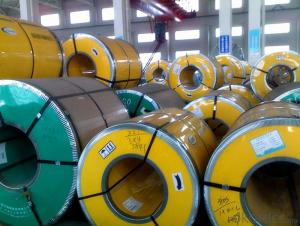Hot Rolled Steel Strip Coils with high quality in China
- Loading Port:
- Tianjin
- Payment Terms:
- TT OR LC
- Min Order Qty:
- 55 m.t.
- Supply Capability:
- 222555 m.t./month
OKorder Service Pledge
OKorder Financial Service
You Might Also Like
Item specifice
Applications of Steel Strip Coils:
1:Chemical industry equipment, Industrial tanks
2:Medical Instruments,Tableware, Kitchen utensil,kitchen ware
3:Architectural purpose, Milk & Food processing facilities
4:Hospital Equipment, interior Exterior decoration for building
5:Architectural purposes, escalators, kitchen ware,vehicles
Festures of Steel Strip Coils:
1. Each coil is closely covered by oil paper or plastic film.
2. Outside it is firmly packed with sack cloth or compound paper.
3. Steel strap or PP strap to pack the outside to ensure safety.
4. On/about 1000kgs to be packed with one wooden pallet.
5. Strips can be loaded to 20'FCL without pallet if required by customer.
6. LCL shipment can also be arranged once required by the customer.
Specifications of Steel Strip Coils:
Household Appliance | Refrigerator shutter &side panels, Rice Cooker, Washer, Microwave Ovens, Freezers, Air conditions, Water Heaters, Sterilization Cabinets, Range Hoods, Computer Panels , DVD/DVB panels, TV back panel etc. |
Construction Material | Fireproof Door &Kitchen Cabinet ,Ceiling, Sanitary Unit, Elevator etc. |
Transportation | Car, Ship, Trains, Aircraft Equipment. etc. |
Education and Health Field | Electronic Writing Boards, Projection Screens, Clean Operating Rooms, etc. |
Images of Steel Strip Coils:
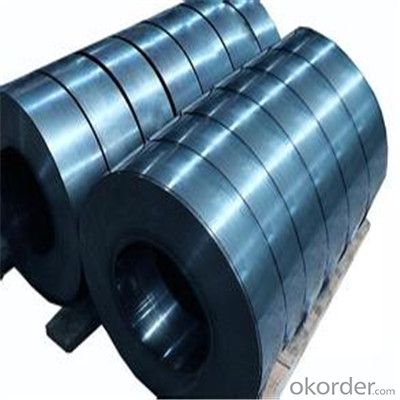
FAQ
1.What's your MOQ?
25MT, it is for one container.
2.Do you have QC teams?
Yeah, sure, our QC team is very important, they will keep the quality control for our products.
3. What's your normal delivery time?
Our delivery time about 10-20days for standard sizes, if you have other requirements like hardness and width ,it is about 20-40days.
- Q:How do steel strips compare to other materials like aluminum or plastic?
- Steel strips, when compared to other materials like aluminum or plastic, have several distinguishing characteristics that make them unique in terms of strength, durability, and versatility. Firstly, steel strips are renowned for their exceptional strength. Steel is known to have a high tensile strength, making it more resistant to bending and breaking compared to aluminum or plastic. This property allows steel strips to withstand heavy loads and endure harsh conditions, making them suitable for applications where structural integrity is crucial. Additionally, steel strips exhibit superior durability. Unlike aluminum, which is prone to corrosion, steel is highly resistant to rust and can withstand exposure to moisture, chemicals, and other environmental factors. This durability ensures that steel strips maintain their integrity over time, making them ideal for long-term applications. Moreover, steel strips offer excellent versatility. They can be easily customized and fabricated into various shapes and sizes, allowing for a wide range of applications across different industries. Steel strips can be used in construction, automotive manufacturing, electrical appliances, and many other sectors due to their adaptability and versatility. While aluminum and plastic have their own advantages, such as being lightweight or cost-effective, steel strips excel in terms of strength, durability, and versatility. The choice between these materials ultimately depends on the specific requirements of the project and the desired characteristics needed to ensure optimal performance.
- Q:What are the different edge conditions available for steel strips?
- Some of the different edge conditions available for steel strips are mill edge, slit edge, round edge, deburred edge, and sheared edge.
- Q:How are steel strips used in the railway industry?
- Steel strips have a wide range of uses in the railway industry. One key application is in the production of railway tracks. These strips are shaped into rails that form the track structure. They are typically hot-rolled, providing the necessary strength, durability, and stability. Steel strips are also utilized in the construction of railway bridges and tunnels. They are often used as reinforcement in concrete structures, enhancing their load-bearing capacity and structural integrity. Additionally, steel strips can be used as tie plates to evenly distribute the load and prevent the rail from sinking into the wooden ties. Besides track and infrastructure applications, steel strips are used in manufacturing various railway components. These include rail clips, fishplates, and fasteners. Rail clips secure the rails to the sleepers, ensuring proper alignment and preventing lateral movement. Fishplates connect two rail sections seamlessly, allowing for a smooth transition. Fasteners, such as bolts and nuts, maintain the stability and safety of the track. Furthermore, steel strips are essential in the fabrication of rolling stock components. They form the structural framework of railway wagons and locomotives, providing strength and rigidity. Steel strips are also utilized in the production of interior and exterior parts like doors, panels, and frames. In conclusion, steel strips are vital in the railway industry as they offer the necessary strength, durability, and stability to tracks, infrastructure, and rolling stock components. Their versatility and excellent mechanical properties make them an essential material for ensuring the safe and efficient operation of railways.
- Q:Can steel strips be used for making utensils?
- Steel strips cannot be used to make utensils. Although steel is commonly used for utensils due to its strength and durability, steel strips are not suitable for this purpose alone. Steel strips are thin, flat pieces primarily used in construction and manufacturing industries for reinforcing structures or creating machinery parts. To create utensils, steel must be shaped and molded into specific forms such as spoons, forks, or knives, which cannot be achieved with steel strips alone. Utensils are typically made from stainless steel, a type of steel resistant to corrosion and staining, making it ideal for food-grade applications. This stainless steel is melted, shaped, and further processed to achieve the desired utensil shape and finish. Therefore, while steel strips play a role in the manufacturing process of utensils, they cannot be directly used for making utensils themselves.
- Q:How are steel strips cut to size?
- Steel strips are typically cut to size using a variety of methods such as shearing, slitting, or sawing. Shearing involves using a large machine with sharp blades to cut the steel strip into desired lengths. Slitting, on the other hand, uses multiple circular blades to cut the strip into narrower widths. Sawing is another method where a saw blade is used to cut the steel strip to the desired size. These cutting methods ensure precise and accurate dimensions for the steel strips.
- Q:Can steel strips be used in the production of storage tanks?
- Yes, steel strips can be used in the production of storage tanks. Steel strips are commonly used as a material for constructing storage tanks due to their high strength, durability, and resistance to corrosion. They can be easily shaped and welded, making them suitable for creating the necessary structure and framework of a storage tank. Additionally, steel strips can be customized to meet specific size and thickness requirements, making them a versatile choice for storage tank production.
- Q:Are steel strips suitable for packaging or shipping purposes?
- Yes, steel strips are suitable for packaging or shipping purposes as they provide strong and durable protection for goods. They can be easily secured around packages and containers, offering stability and preventing damage during transportation. Additionally, steel strips are resistant to corrosion and can withstand heavy loads, making them ideal for packaging and shipping in various industries.
- Q:How are steel strips stored?
- Steel strips are typically stored in a controlled environment to prevent any damage or deterioration. They are usually kept in warehouses or storage facilities that are clean, dry, and well-ventilated. The strips are stored on racks or shelves, with each strip being properly labeled for easy identification and retrieval. To ensure the longevity of the steel strips, they are often stored in a horizontal position, stacked neatly on top of each other to minimize any bending or warping. Adequate space is maintained between each stack to allow for easy access and inspection. Additionally, heavy-duty packaging materials such as wooden pallets or plastic wrapping are used to protect the strips from moisture, dust, and other potential contaminants. It is important to store steel strips away from any corrosive substances or chemicals that could cause damage to the material. Therefore, storage areas are typically kept separate from areas where such substances are present. Some storage facilities also have climate control systems to regulate temperature and humidity, which helps prevent corrosion and other forms of degradation. Regular inspections are conducted to check for any signs of damage or deterioration, such as rust or deformation. Any damaged or compromised steel strips are promptly replaced or repaired to maintain the quality and integrity of the stored materials. Overall, the storage of steel strips involves careful organization, protection, and regular maintenance to ensure their quality and usability for various industrial applications.
- Q:How do steel strips behave under different loading conditions?
- The behavior of steel strips varies depending on the loading conditions they are subjected to. When exposed to tensile loading, the steel strips elongate and stretch as a result of the applied force. This is due to the internal atomic structure of steel, which allows it to undergo plastic deformation when under tension. However, if the applied load surpasses the ultimate strength of the steel, it will undergo necking and eventually break. Under compressive loading, steel strips have a tendency to buckle or crumple. This occurs when the compressive force causes the steel to lose stability and deform in a non-linear manner. The behavior of the steel strip when compressed is influenced by factors such as its geometry, aspect ratio, and boundary conditions. During bending, steel strips experience both tensile and compressive stresses. The top surface of the strip is subjected to tensile stress, while the bottom surface experiences compressive stress. This creates a neutral axis in the middle, where there is no stress. The behavior of steel strips when bent relies on their cross-sectional shape, thickness, and the moment applied to them. When exposed to torsional loading, steel strips twist along their length. This twisting occurs as a result of the shear stress induced by the applied torque. The behavior of steel strips when twisted depends on their cross-sectional shape and material properties. In conclusion, steel strips display different behaviors when subjected to various loading conditions. Understanding these behaviors is essential in order to effectively design and engineer structures that utilize steel strips.
- Q:What are the different types of corrosion protection for steel strips?
- There are several types of corrosion protection methods that can be used for steel strips. Some of the most common ones include: 1. Galvanization: This process involves coating the steel strip with a layer of zinc. The zinc acts as a sacrificial anode, corroding before the steel does. This method provides excellent protection against corrosion and is commonly used for outdoor applications. 2. Powder coating: This method involves applying a layer of powdered polymer onto the steel strip, which is then heated and cured to form a protective coating. Powder coating is highly resistant to corrosion, abrasion, and chemicals, making it a popular choice for various industries. 3. Paint coatings: Painting the steel strip with a corrosion-resistant paint is another effective method of protection. The paint creates a barrier between the steel and the environment, preventing moisture and oxygen from reaching the metal surface. 4. VCI (Vapor Corrosion Inhibitor): VCI technology involves vaporizing a corrosion inhibitor and sealing it within a package or enclosure containing the steel strips. The inhibitor molecules form a protective layer on the metal surface, preventing corrosion. 5. Hot-dip aluminizing: This process involves immersing the steel strip in a bath of molten aluminum. The aluminum forms a protective layer on the surface of the steel, providing corrosion resistance. 6. Electroplating: Electroplating involves immersing the steel strip in an electrolyte solution and passing an electric current through it. This causes a layer of metal (e.g., zinc, nickel, or chromium) to be deposited onto the steel, providing corrosion protection. 7. Organic coatings: Organic coatings, such as epoxy or polyurethane paints, can be applied to steel strips to provide corrosion protection. These coatings offer excellent resistance to moisture, chemicals, and UV radiation. It is important to consider the specific application and environment in order to choose the most suitable method of corrosion protection for steel strips. Each method has its own advantages and limitations, so it is essential to evaluate factors such as durability, cost-effectiveness, and maintenance requirements before making a decision.
1. Manufacturer Overview |
|
|---|---|
| Location | |
| Year Established | |
| Annual Output Value | |
| Main Markets | |
| Company Certifications | |
2. Manufacturer Certificates |
|
|---|---|
| a) Certification Name | |
| Range | |
| Reference | |
| Validity Period | |
3. Manufacturer Capability |
|
|---|---|
| a)Trade Capacity | |
| Nearest Port | |
| Export Percentage | |
| No.of Employees in Trade Department | |
| Language Spoken: | |
| b)Factory Information | |
| Factory Size: | |
| No. of Production Lines | |
| Contract Manufacturing | |
| Product Price Range | |
Send your message to us
Hot Rolled Steel Strip Coils with high quality in China
- Loading Port:
- Tianjin
- Payment Terms:
- TT OR LC
- Min Order Qty:
- 55 m.t.
- Supply Capability:
- 222555 m.t./month
OKorder Service Pledge
OKorder Financial Service
Similar products
New products
Hot products
Hot Searches
Related keywords
